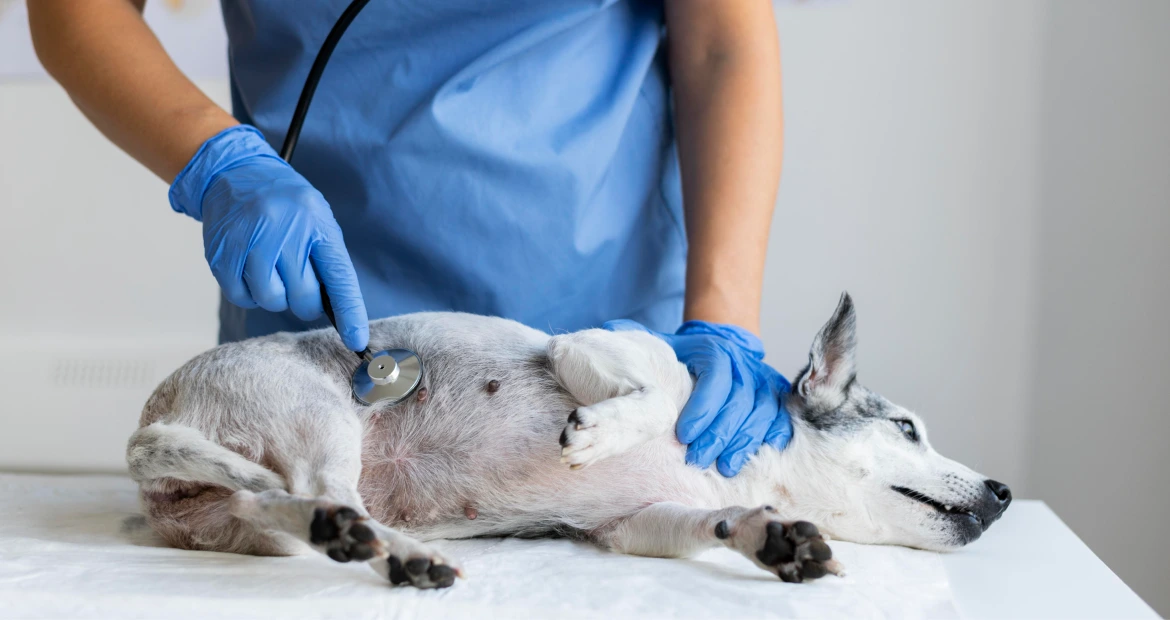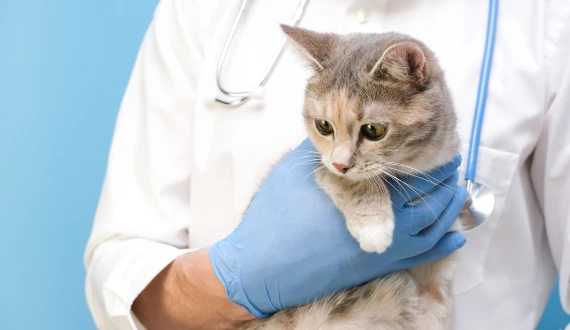Causes, Symptoms, Diagnosis, and Treatment of Pyometra in Dogs and Cats

Pyometra is a term that many pet owners have heard, but not everyone understands its meaning. Let's determine the root cause of this issue. Today we will discuss pyometra, its symptoms, prognosis, and treatment options beyond surgery. We will also address whether it is a cause for concern.

Causes of Pyometra
Pyometra is an accumulation of pus in the cavity of the uterus. The reasons for the development of this condition in cats and dogs differ.
The uterus typically has the ability to manage a small amount of bacteria on its own due to its immunity. In dogs, the vagina has its own flora and bacteria. It requires a combination of factors for the uterus to cease handling them.
- Lowering the immunity of the uterus;
- There is abnormal growth of bacteria in the vagina.
During the post-heat period (diestrus/metestrus), every dog experiences a decrease in immunity within the uterus, known as immunosuppression, caused by the hormone progesterone. After ovulation¹, the dog's body produces the pregnancy hormone, which causes the endometrium to grow excessively, increases secretion from its glands, closes the cervix, and reduces contraction of the myometrium. Progesterone creates the favorable conditions for pyometra. It is the hormone responsible for creating a favorable environment for this condition. If the endometrium is healthy, the situation is under control. However, if pathologies such as cystic endometrial hyperplasia (CEH), endometritis, fibrosis, or other conditions are present, the uterus may not be able to effectively combat bacterial infections. Especially when considering the rapid multiplication of bacteria due to vaginitis, anatomical abnormalities, and other vaginal pathologies. Pyometra most commonly develops under these conditions.
Cats have a unique reproductive cycle, meaning ovulation does not occur during every heat. This means that the frequency of progesterone increase is reduced, resulting in a lower chance of pyometra². When there is no ovulation, there is no progesterone, and therefore no pyometra. Cats ovulate only when they are induced, which occurs during sexual intercourse when the male cat's penis induces ovulation.
Sometimes, cats can ovulate spontaneously due to external stimuli or excessive interaction with their owner. However, it is important to note that not all cats develop pyometra after ovulation. Similar to dogs, uterine pathologies can also be a contributing factor.
It is important to understand that if a pet has pyometra, there are likely predisposing factors. Therefore, in addition to treating the underlying disease (if conservative methods are being used), it is necessary to conduct an examination to identify the root cause. Otherwise, the illness will recur repeatedly, and surgical intervention will become necessary.
Is pyometra a dangerous condition? Definitely yes. Failure to provide treatment can result in peritonitis, sepsis, and ultimately the death of the pet.
Below we will discuss possible methods of treatment and symptoms, which will enable you to identify the pathology in time and provide assistance.

Symptoms and Diagnosis of Pyometra
Among the reasons to suspect pyometra in an animal are:
- a state of depression;
- lethargy;
- In cases of open pyometra, there may be discharge from the womb entrance, while on closed pyometra there is no discharge.
- Polyuria, which is characterized by increased urination,
- Polydipsia, which is characterized by increased thirst,
- Anorexia;
- An increase in body temperature;
- Abdominal wall tenderness upon palpation;
- Vomiting;
- Forced body posture.
To obtain a prognosis and determine treatment tactics, it is crucial to identify whether the pyometra is open (with discharge) or closed (without discharge).
The most reliable method for diagnosing reproductive tract issues in animals is through ultrasound investigation. During the diagnostic assessment, it is important to evaluate not only the uterus for the presence of contents but also the ovaries for the presence of cysts, as well as the cranial part of the vagina and the urinary system in general.
It is crucial to promptly determine the cause of pyometra. This is because the treatment approach varies significantly depending on the underlying cause, such as a hormone-producing tumor.
If a vaginal cytology is performed, it may also show active signs of inflammation. However, it is important not to confuse these symptoms with vaginitis and to use additional diagnostic methods.


Possible Treatments for Pyometra
The surgical method is the most appropriate for animals that have no breeding value. Surgical treatment can prevent recurrences and promote a faster recovery for the pet.
There is a second method, known as the medication method, which is used for animals with high breeding value. However, it comes with itsown set of risks and nuances. Medication treatment of pyometra may result in relapses, which are common in practice. Therefore, it is crucial to identify and eliminate the root cause of the disease, if possible. The medication method aims to eliminate bacteria in the uterine cavity and remove pus from the uterus. At this point, we should make a note.
If there is pus present, antibiotics should be prescribed. But pus drainage needs to be dealt with.
Pyometra is a condition that arises when progesterone blood level is high. Antiprogestins are an effective treatment for this condition. These medications inhibit progesterone receptors and mitigate the impact of progesterone on the uterus. This means that they can restore local immunity, open the cervical canal, restore uterine tone, and facilitate the rapid expulsion of purulent contents. However, it is also possible for a pet to present with pyometra at the clinic, even when the progesterone level is already physiologically decreasing. In this case, the cervix remains closed, and there is no convergence in the expulsion of pus. Therefore, the use of antiprogestins is not appropriate. In such cases, another group of drugs, prostaglandins, are effective. Prostaglandins should only be used under the supervision of a doctor due to the risk of side effects.
To summarize, successful medical treatment of pyometra requires an initial assessment of the pet's general condition, including a complete blood count (CBC) and basal body temperature (BBT), as well as measurement of progesterone blood levels.

Preventing Pyometra
The most reliable method of preventing pyometra is timely castration of non-breeding animals. Breeding animals require constant monitoring of their body condition, including regular ultrasound scans of their reproductive system. This is necessary to detect the development of pyometra early and provide appropriate assistance to the animal.
[1] Canine Pyometra. Veterinary World Vol.3(7): 340-342, 2010.
[2] Pyometra in Small Animals. Ragnvi Hagman. Vet Clin Small Anim 48, 639–661, 2018.



